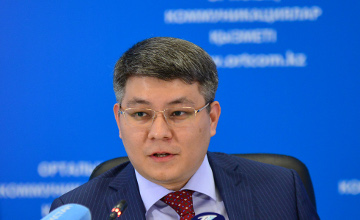The intermediate results of the Road Map 2020 programme’s implementation were announced during a recent Central Communication Service press conference in Astana, including the funds allocated for various projects and job creation projections.
According to the Vice Minister of Health Care and Social Development Daulet Argandykov, this year the government allocated 37 billion tenge (US$199.1 million) to support the project.
The government also plans to repair 520 buildings in rural areas and continue the construction of 30 health clinics in rural areas. These measures are expected to create 4,000 new jobs. More than 10 billion tenge (US$53.8 million) has also been allocated to provide microcredit opportunities for self-employed and unemployed citizens. According to the vice minister, Road Map 2020 also offers professional training programmes.
“As part of government and industry programmes Nurly Zhol, Business Road Map 2020 and the Unified Programme on Regional Development, more than 320,000 citizens of Kazakhstan will be employed this year and about half of them will get permanent jobs,” said the vice minister.
According to Argandykov, the unemployment rate in Kazakhstan fell from 6.6 percent in 2008 to 5 percent last year. During the same period, the number of economically active people increased by 500,000 and amounted to nine million citizens. The employed population in the country increased from 7.8 to 8.5 million.
“For comparison, according to the European statistic agency Eurostat, the unemployment rate reached 11.3 percent in 2014. Of course, the data vary by country. For example, in Eastern Europe, the unemployment rate reached 18 percent, in Germany only 5 percent. Traditionally, the worst situation has been in Greece, where every fourth citizen of working age is unemployed,” said Argandykov.
Talking to journalists, the vice minister noted that blue collar occupations are particularly in demand on the market now.
“We are constantly monitoring the available working positions on the market. We have also conducted a survey with a participation of about 5,000 employers to determine their need for labour forces. The most popular occupations are drivers, mechanics, welders, tractor drivers. Particular shortage of labour forces is observed in the field of agriculture and in the construction industry. These trends will continue remaining over the next five-year period,” concluded the vice minister.



